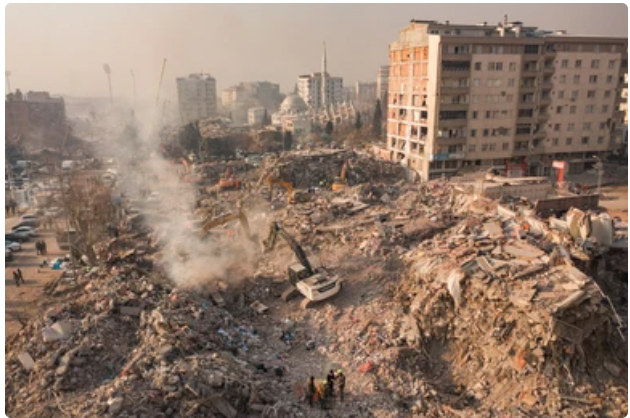Influences on the Economy: Natural Disasters
Natural disasters are any natural events which cause damage or harm to people, the environment, and in turn, the overall economy. Occurrences of earthquakes and volcanic eruptions across the globe have wreaked not just direct implications on human life and loss of industry, but long term secondary impacts on financial stability and diversion of funds. At face value, natural disasters present many challenges to an economy, though it also provides scope for new opportunities and innovation.
The direct costs of a natural hazard are always a significant effect. The most expensive disaster in history was the 2011 Tohoku earthquake in Japan, as the damage was estimated at $235 billion (though other sources claim it was upwards of $360 billion). This means that government funds cannot be directed towards more economically progressive areas such as technology and other financial industries. The immediate costs are further compounded by the rebuilding costs to construct houses and buildings again, which exceeded $125 billion after Hurricane Katrina.
The impact to the economy lies not only in the direct cost of recovery, but also the loss of human life and productivity. The 2010 Haiti earthquake causes 230000 deaths, halting most industrial processes in manufacturing and transport of goods. This in turn interrupts supply chains, stopping the distribution of goods internationally. Not only does this force smaller businesses to close, it also reduces global supply of goods, hence increasing prices. Whilst this may lead to increased returns for investors, the sudden inability to import stable amounts of a good would also hinder the dependant industries in other countries.
Finally, the insurance industry is heavily pressurised as natural disasters claim large amounts of funds. The 2017 hurricanes Harvey, Maria and Irma led to combined losses of $92 billion, causing fluctuations in financial markets.
However, opportunities for stimulating the economy appear during the reconstruction phase. Job creation to clear damage in central tourist areas can mitigate the loss of industry to an extent, improving levels of disposable incomes and taxation over a short term.
Creative destruction is when firms adopt new technology to deal with disasters and enhance the productivity of firms which have survived. Exploration into more modern infrastructure as well as systems to backup large data sets can help drive more efficient and robust industries.
Firm selection is also a proposed hypothesis which explains that in the event of natural disasters, the least efficient and viable businesses will naturally fail, leaving behind the most competitive firms. Whilst the idea of increased competition can help drive certain industries forward, as well as stocks and share values for top firms, the hypothesis has been met with scepticism as this depends greatly on the location, strength and nature of the disaster.
Overall, natural disasters can have devastating economic impacts in both the short and long term, though the potential for further advancements and innovation in technology during the aftermath may provide some mitigation.




Comments
Post a Comment